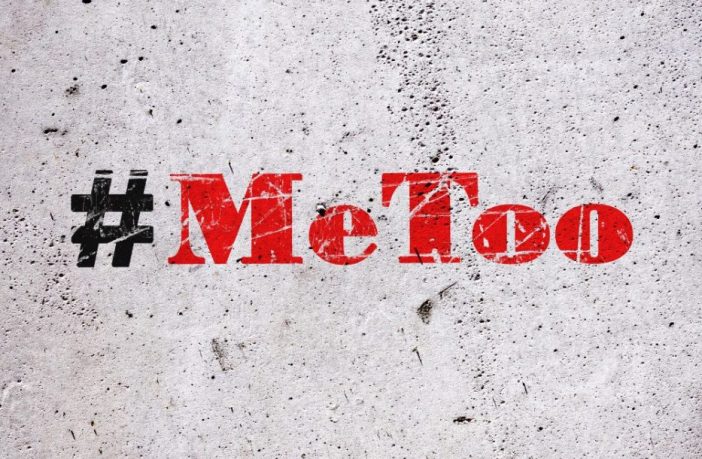Senior lecturer in psychology Lisa Lazard writes about sexual harassment and today’s society:

Harvey Weinstein, Photo by david_shankbone 
Over the last year, the topic of sexual harassment seems rarely out of the news. The case of Harvey Weinstein is the most recent in a series of high profile sexual harassment cases that have been brought to public attention in 2017. In reverse order, the case against Ex Radio DJ, David Mueller, for his sexual harassment of Taylor Swift received press coverage in August. Particularly noteworthy was the praise she received for her indomitable testimony, where she was reported to say “I’m not going to allow you or your client to say I am to blame”. In June, the media reported the mass firing of employees at Uber – a private technology company – as a response to hundreds of sexual harassment complaints lodged with their human resources department. These cases well-illustrate the point of the International Women’s day marches on March 8th 2017 where women protested across the globe against gender-based inequalities. These marches were in part spurred by the election of Donald Trump in amidst of media reports of his misogyny, sexual harassment and abuse of women.
Sexual Harrassment in the 1990s
It was in the wake of a similar public furore in the 1990s that I first became interested in sexual harassment as a topic for research. At the time, the case against US president Bill Clinton was frequently reported in the popular press. This coverage reached fever pitch when it was alleged that he lied about his sexual relationship with intern Monica Lewinsky. Sexual harassment was also a popular story line in Films such as Disclosure and TV programmes like Ally McBeal and South Park.
What I noticed is that during the mid-2000s, there seemed to be hiatus in interest in the topic. The odd sexual harassment case came to public attention but was not so extensively discussed as it was in the 1990s. While other forms of sexual violence against women and girls were still on the public agenda, it seemed to me that the issue of sexual harassment had lost traction.
Are we in more enlightened times?
Harvey Weinstein’s Lawyer explained that Weinstein was a ‘dinosaur’, a product of a more misogynistic era. What this assumes is that we are now in more ‘enlightened’ times – where gender equality is accepted, where abuses of sex and of power are the exception rather than the norm. Has advances in gender equality made most people (particularly women), for most of the time, safe from sexual harassment? Judging by the events of this year, the answer to this question is far from clear-cut.
It is certainly the case that 21st century living has changed massively over the last few decades particularly in western industrialised societies. Power disparities based on gender are still a feature of contemporary working life. Whilst it’s true that women have more access to paid employment than they have done historically, it’s also true that they are more likely to be in part-time work and in service jobs than men. It’s also still the case that women hit glass ceilings and fall off glass cliffs as they move up in the workplace hierarchy.
Blurred lines
Changes in how we do work now adds further layers of complexity for understanding how power relationships play out in paid employment. Job security for life is much a thing of the past. The transient nature of Job security in the new world of work, particularly in cultures of austerity, may lend itself to power abuse. Similarity, the practice of a set time of day when people ‘clock out’ and stop work has gradual eroded in many workplaces.
The rise in technologies have afforded many with new flexible ways of working which further blurs the boundaries of when we’re on and off the job. There is less of a clear division between ‘private’ and professional identities which can be seen in the use of our ‘private’ selves on social media for networking and self-promotion. Uncertainties around when work ends and personal life begins may make it less clear when and how workers can seek professional legal address for sexual harassment.

‘Selfie’ culture and social media has put young women under pressure
These work changes are happening in highly sexualised cultural contexts. 21st century life has seen new and empowered meanings of girl and womanhood which emphasise ‘choice’, ‘freedom’ and ‘empowerment’. At the same time, the expectation remains, across many working practices, that women go to effort to be ‘attractive’ and ‘sexy’. Similarly, whilst social media can create new spaces for autonomous meanings of girl and womanhood, it can also act as sites for body surveillance. Beautification apps, alongside visual media’s current emphasis on feminine ‘hotness’ and ‘sexiness’, contribute to the pressures young women face when building their identities both on and off line.
Gender equality is mainstream, but it’s complex
21st century living presents new changes and challenges across the cultural landscape that give rise to sexual harassment. But we also live in a world where ideas about gender equality and feminism have become increasingly mainstream. This is particular visible in the ways in which sexual harassers have been held to account in much of the reporting of it this year. This stands in stark contrast to how sexual harassment was routinely made ‘funny’, ‘sexed up’ or understood as a blip in the dating process in the 1990s.
The recognition that sexual harassment is still a problem for everyone has been made visible on social media. This can be seen in the campaigns #metoo, where women across the globe are recounting their personal experiences of harassment, and #howIwillchange, where men are speaking about how they will challenge it. While these public campaigns are undoubtedly important, it’s also crucial that we don’t lose sight of the complexities of gender and power when trying to understand how sexual harassment is a problem for everyone.
When high profile cases perpetuate the notion that men that are naturally predatory we risk losing sight of how femininity and masculinity becomes relevant to all as we make sense of ourselves in 21st century life. Moreover, we risk reducing the space to hear stories that do not conform to the pattern of male perpetrators and (most often young) female victims.
This article was originally published on the OU Psychology Blog.
Take it further:
Study psychology at The Open University
Free course materials on OpenLearn
Read Dr Lazard’s article on the selfie culture



